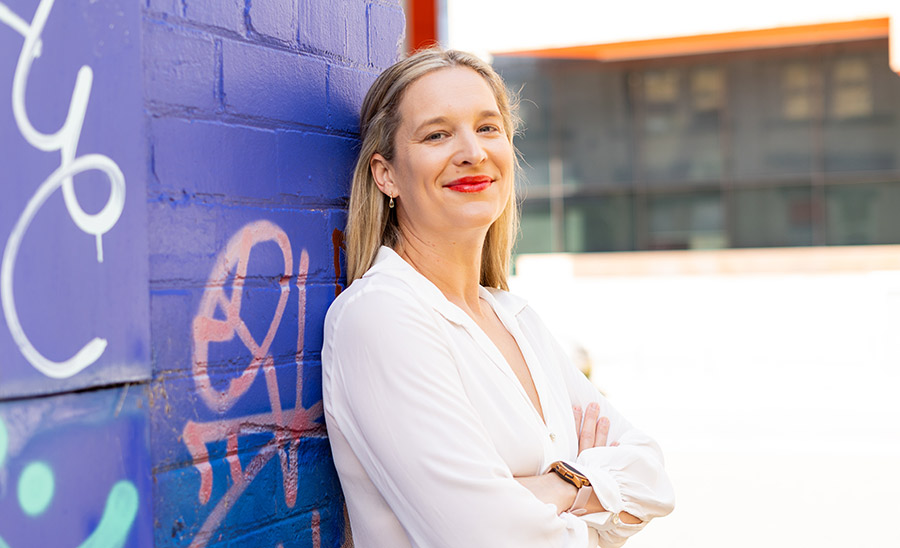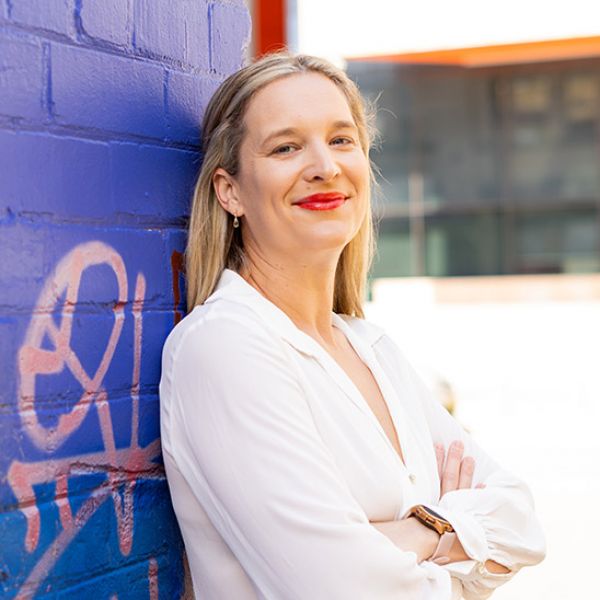Using IP and imagery to show how law and society interact
Dr Marie Hadley
Intellectual property law expert Dr Marie Hadley wants to better understand how law and society interact, particularly in the context of disputes over visual imagery. Her expertise in copyright has centred on empirical research and artist practices.

Marie’s work examines how law interacts with society, especially regarding visual imagery and artistic practices. She also investigates how social norms and informal rules shape creativity and copying in the shadow of formal law.
Her research covers topics such as graffiti, tattoos and the unauthorised use of First Nations’ cultural imagery, including Māori, Aboriginal, and Torres Strait Islander art.
By analysing everyday artistic practices, cultural norms, and business considerations alongside legal frameworks, she aims to uncover the complex legal, ethical and cultural issues surrounding copyright disputes.
Marie is particularly interested in the reciprocal influence between creative communities and law, as well as how stakeholders—like artists and activists—perceive their legal rights. Her goal is to demonstrate that law and society have a dynamic, two-way relationship.
By gaining a deeper understanding of this relationship, she hopes to enhance the process of lawmaking, improve the provision of legal advice to enhance creator agency and ensure that legal changes benefit the communities affected.
Additionally, Marie’s work aims to clarify how norms and laws are communicated within creative communities, paving the way for targeted interventions to improve policy outcomes for those impacted by copyright issues.
Tattoos and IP’s negative space
Marie has long been fascinated by the 'negative space' of intellectual property law.
Negative space refers to the space where creativity and innovation flourish beyond the incentives provided by IP laws. It can include those fields of creative endeavour that haven’t been historically addressed by IP laws or where those laws aren’t seen as necessary to inspire creativity. Tattoo artistry is one such field.
“In my PhD, I interviewed Māori tā moko artists (cultural tattoo practitioners) and pākehā tattooists about their perspectives on cultural appropriation and Mike Tyson’s tattoo – a tattoo that was the subject of copyright infringement litigation in the Whitmill v Warner Bros. Entertainment case.”
“When I was in Aotearoa meeting with artists, I realised very quickly that cultural knowledge systems, norms, ethics and business considerations can have a much greater impact on an artist’s stance on creativity and copying than the rules around copyright infringement. Yet, the law remains focused on a narrow, Western-centric view of originality and ownership, rooted in romantic notions of authorship."
Her findings were published in the article Whitmill v Warner Bros and the visibility of cultural appropriation claims in copyright law and the book chapter Mike Tyson’s Tattoo.
This fieldwork was a powerful introduction to how law can be much more than a rule outlined in a piece of legislation or a pronouncement from a judge. It can also be found in what people think it is, what is spiritually or culturally permissible, and in the patterns of conduct that can feel ‘lawful’, ‘right’, or ‘moral’.
She remains drawn to this field of research because she’s intrigued by how conceptions of law and legality can be built from the bottom-up within creative communities and the legal consciousness of artists, as well as from the top down through traditional legal processes, such as the passing of legislation by parliament or decisions in legal cases.
“Both law and society are powerful and dynamically engage with each other”, she continues.
Artists as equal research contributors
Through the course of her work, Marie partners with people from different disciplines to unpack perspectives on controversies involving visual imagery and copyright law from various angles, including scholars from law, history and creative industries.
She also works with practising artists such as designers, illustrators, tattooists, and musicians. But while she’s interviewed them in her empirical research, her preference is to work with them as equal contributors rather than research participants.
“These collaborations help me to create research that places cultural and subcultural knowledge on an equal footing with legal knowledge to bring additional depth and understanding to legal disputes or issues,” she explains.
However, she does say that working closely with practising artists can be a practical challenge. It requires funding to support the involvement of non-salaried researchers and ensure that they’re paid properly for their contributions, and time.
But the best work happens when you have an opportunity to build relationships in person and sit down and chat while an artist creates.
In the near future, Marie plans to collaborate with a UK tattooist and illustrator on research involving recent tattoo copyright infringement cases. She’s excited to see what they can achieve—and hopes this partnership will forge a new, ground-breaking socio-legal methodology in art law.
Initiating public dialogue for reform
From an impact perspective, Marie’s research is contributing to public dialogue about thorny socio-political issues that extend beyond the analysis of legal disputes,
It challenges people to think more holistically about the relationship between art, law and justice. This includes competing perspectives about what role legal rights might play in reflecting, consolidating or resolving problematic social dynamics.
“The controversies I study provide a microcosm of social, cultural and political contestation, offering a platform for dialogue about important social issues and their relationship to law,” she explains.
These issues include the cultural sensitivity and responsiveness of law, the impact of public art on the experiences of vulnerable or marginalised communities in public spaces, the cultural harm of appropriating imagery or art styles, and the interplay between innovation and copying.
Entropy Awakens critical thinking
One of Marie’s recent research projects involved the socio-legal analysis of anti-racist graffiti on controversial public statues.
As part of this project, she piloted a method for undertaking practice-based research with artist Travis De Vries, who is known for artworks linked to or inspired by social or political protests.
“I commissioned Travis to create an artwork in response to a piece of legal scholarship critical of the rights that exist in public artworks that shut down dialogue about racism. This artwork, called Entropy Awakening, was exhibited alongside our collaborative research at Redfern Gallery 107.”
The launch of the exhibition attracted 50+ attendees, and the installation, significant print and radio media interest.
“After the exhibition, Travis and I used Entropy Awakening to develop a critical thinking teaching module to support intellectual property law students in reflecting upon the racial biases and inequalities of intellectual property law.”
Her research helps students to think critically, contextually, and creatively about the relationship between law and society.
What legal research can be
Marie is proud that in her work, she’s developed socio-legal methods to provide a multi-faceted view of the legal, ethical and cultural dimensions of controversies involving copyright law.
“I enjoy telling unexpected stories about the law that connect everyday creative practices, norms and formal legal rules with legal scholarship advocating for stronger protections against the unauthorised appropriation or interference with artworks.”
She’s excited to continue to work collaboratively and creatively with people who work outside of her discipline and to push the boundaries of what legal research is and can be.
Marie is available for media comment on the following topics: copyright law, tattoo law, cultural appropriation, protest art and intellectual property, graffiti of public art, law/norms and creative communities and legal education.
The University of Newcastle acknowledges the traditional custodians of the lands within our footprint areas: Awabakal, Darkinjung, Biripai, Worimi, Wonnarua, and Eora Nations. We also pay respect to the wisdom of our Elders past and present.
